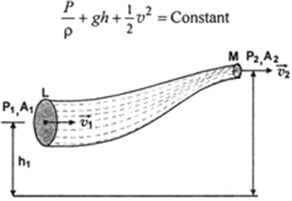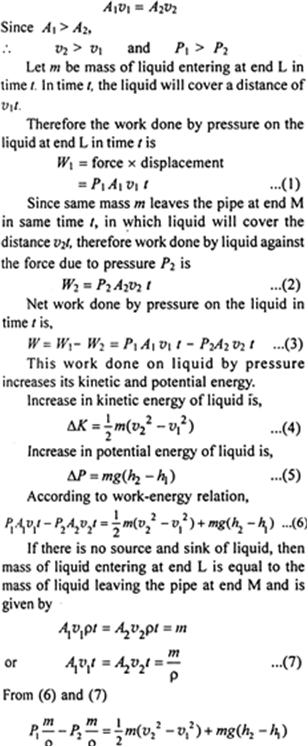Ask questions which are clear, concise and easy to understand.
Ask QuestionPosted by Varaprasad Mamidisetti 5 years, 1 month ago
- 1 answers
Posted by B S 5 years, 1 month ago
- 2 answers
Kalki Kalki 5 years, 1 month ago
Posted by Dhruv ... 5 years, 1 month ago
- 4 answers
Posted by Usha M.R 5 years, 1 month ago
- 0 answers
Posted by Saloni Choudhary 5 years, 1 month ago
- 3 answers
Yogita Ingle 5 years, 1 month ago
Scalar products can be found by taking the component of one vector in the direction of the other vector and multiplying it with the magnitude of the other vector”. It can be defined as: Scalar product or dot product is an algebraic operation that takes two equal-length sequences of numbers and returns a single number.
Posted by Klaret Rongpipi 5 years, 1 month ago
- 2 answers
Abirami Kamalbabu 5 years, 1 month ago
Posted by Himanshu Sharma 5 years, 1 month ago
- 2 answers
Yogita Ingle 5 years, 1 month ago
The dimensional formula of gravitational constant is given by,
M-1 L3 T-2
Where,
- M = Mass
- L = Length
- T = Time
Posted by Rudolf William 5 years, 1 month ago
- 1 answers
Yogita Ingle 5 years, 1 month ago
Given, mass, m = 72.2 kg
Gravity acceleration, g = 9.8 m/${{s}^{2}}$ Scale reading = apparent weight = R = ?
(i) While descending with constant velocity, a =0
R = mg
R = 72.2 x9.8
=>R = 707.56 N
(ii) While ascending with a = 3.2 m/${{s}^{2}}$
R = m(g + a)
R = 72.2 (9.8 + 3.2) = 938.6 N
Posted by Nishtha Sharma 5 years, 1 month ago
- 2 answers
Posted by Wansiewdor Sohkhia 5 years, 1 month ago
- 1 answers
Gaurav Seth 5 years, 1 month ago
N = mg
Static friction provides the centripetal acceleration
fs =< μsN
mv2/r =< μsN
v2 =< μsNR/m = μsmgR/m = μsRg
v =< √ μsRg
This is the maximum speed of a car in circular motion on a level road
Posted by ?????? ?? 5 years, 1 month ago
- 2 answers
Yogita Ingle 5 years, 1 month ago
The moment of inertia of a sphere expression is obtained in two ways.
- First, we take the solid sphere and slice it up into infinitesimally thin solid cylinders.
- Then we have to sum the moments of exceedingly small thin disks in a given axis from left to right.
We will look and understand the derivation below.
First, we take the moment of inertia of a disc that is thin. It is given as;
I = ½ MR2
In this case, we write it as;
dI (infinitesimally moment of inertia element) = ½ r2dm
Find the dm and dv using;
dm = p dV
p = moment of a thin disk of mass dm
dv = expressing mass dm in terms of density and volume
dV = π r2 dx
Now we replace dV into dm. We get;
dm = p π r2 dx
And finally, we replace dm with dI.
dI = ½ p π r4 dx
The next step involves adding x to the equation. If we look at the diagram we see that r, R and x forms a triangle. Now we will use Pythagoras theorem which gives us;
r2 = R2 – x2
Now if we substitute the values we get;
dI = ½ p π (R2 – x2)2 dx
This leads to:
I = ½ p π -R∫R (R2 – x2)2 dx
After integration and expanding we get;
I = ½ pπ 8/15 R5
Additionally, we have to find the density as well. For that we use;
p = m / V
p = m / m/v πR3
If we substitute all the values;
I = 8/15 [m / m/v πR3 ] R5
I = ⅖ MR2
Posted by ?????? ?? 5 years, 1 month ago
- 0 answers
Posted by Nidhi Sharma 5 years, 1 month ago
- 1 answers
Gaurav Seth 5 years, 1 month ago
Let u & v be the velocity of the two trains named A & B.
While overtaking the relative velocity of train A with respect to B = u - v.
While crossing, the relative velocity of train A with respect to B = u + v.
Total distance to be travelled by Train A while crossing = 100 + 100 = 200.
So,
20 = 200 ÷ u-v
=> u - v = 10....1)
Also,
10 = 200 ÷ u + v
=> u + v = 20.......2)
On solving the equation 1 & 2, we get;
u = 15 M/S of the train A / First Train.
v= 5 M/S of the train B / Second Train.
Posted by Chandrashekar Chandru 5 years, 1 month ago
- 1 answers
Posted by Aadya Singh 5 years, 1 month ago
- 2 answers
Legendary 5 years, 1 month ago
Posted by Premchand Rajput 5 years, 1 month ago
- 3 answers
Premchand Rajput 5 years, 1 month ago
Yogita Ingle 5 years, 1 month ago
Let 'u' be the initial velocity and 'a' the acceleration.
So we have the distance formula
s = ut + 1/2 at^2
In first 2 seconds,
s = 200
Put the values in the formula.
200 = u x 2 + 1/2 x a x (2)^2
200 = 2u + 1/2 x 4 x a
200 = 2u + 2a
100 = u + a -----(I)
In next 4 seconds
Let the distance traveled be 'y'
Time = 2+4 = 6 sec
So according to the formula ,
y = u x 6 + 1/2a x (6)^2
y = 6u + 1/2 x 36 x a
y = 6u + 18a ------(ii)
Now we know that 220 cm was traveled in between 2 sec - 6 sec
y - 200 = 220
y = 420
We know y = 6u + 18a (from [ii])
So, 6u + 18a = 420
u + 3a = 70 ------(iii)
Equating (I) and (iii)
-2a = 30
a = -15 cm/s^2
u = 100 - (-15)
u = 100 + 15 = 115 cm/sec
Now we know v = u + at
We have to find the "v" after 7th second
So v = 115 + (-15) x 7
v = 115 - 105
v = 10 cm/sec
Posted by Durgesh Saini 5 years, 1 month ago
- 0 answers
Posted by Chanchal Sinha 5 years, 1 month ago
- 1 answers
Abirami Kamalbabu 5 years, 1 month ago
Posted by Aman Dahiya 5 years, 1 month ago
- 0 answers
Posted by Suraj Kumar Jha 5 years, 1 month ago
- 1 answers
Yogita Ingle 5 years, 1 month ago
Here, Mass of machine gun , M = 20 kg
mass of each bullet , m = 35 kg = 0.035 kg
velocity of bullet υ=400m/sυ=400m/s
Number of bullets/sec (n) =400/60=20/3
Force required = rate of change of linear momentum of bullets =n(mυ)/t = 20/3 × 0.035×400/1 =93.3N
Posted by Jesika .. 5 years, 1 month ago
- 3 answers
Yogita Ingle 5 years, 1 month ago
Current density = Current/area = Q/ area×t = [M0L−2T−1Q]
Yogita Ingle 5 years, 1 month ago
The dimensional formula of current density is given by,
[M0 L-2 T0 I1]
Where,
- M = Mass
- I = Current
- L = Length
- T = Time
Posted by Arya Jha 5 years, 1 month ago
- 2 answers
Gaurav Seth 5 years, 1 month ago
Statement: For the streamline flow of non-viscous and incompressible liquid, the sum of potential energy, kinetic energy and pressure energy is constant.

Proof: Let us consider the ideal liquid of density ρ flowing through the pipe LM of varying cross-section. Let P1 and P2 be the pressures at ends L and M and A1 and A2 be the areas of cross-sections at ends L and M respectively. Let the liquid enter with velocity V1 and leave with velocity v2. Let A1 > A2. By equation of continuity,


Yogita Ingle 5 years, 1 month ago
Bernoulli’s principle states that The total mechanical energy of the moving fluid comprising the gravitational potential energy of elevation, the energy associated with the fluid pressure and the kinetic energy of the fluid motion, remains constant.
Bernoulli’s equation formula is a relation between pressure, kinetic energy, and gravitational potential energy of a fluid in a container.
The formula for Bernoulli’s principle is given as:
| p + 12 ρ v2 + ρgh =constant |
Where,
- p is the pressure exerted by the fluid
- v is the velocity of the fluid
- ρ is the density of the fluid
- h is the height of the container
Posted by Isheeta Goel 5 years, 1 month ago
- 0 answers

myCBSEguide
Trusted by 1 Crore+ Students

Test Generator
Create papers online. It's FREE.

CUET Mock Tests
75,000+ questions to practice only on myCBSEguide app
 myCBSEguide
myCBSEguide
Yogita Ingle 5 years, 1 month ago
In rotation the body's centre of mass does not undergo any translation motion. In other words the centre of mass will remain at on place. Like a top spinning on its axis.
In circular motion the body's centre of mass goes around a fixed centre maintaining a constant distance from it. Which means the centre of mass is actually going through a translation motion. For example an ant sitting on the circumference of the spinning top in the above example.
1Thank You